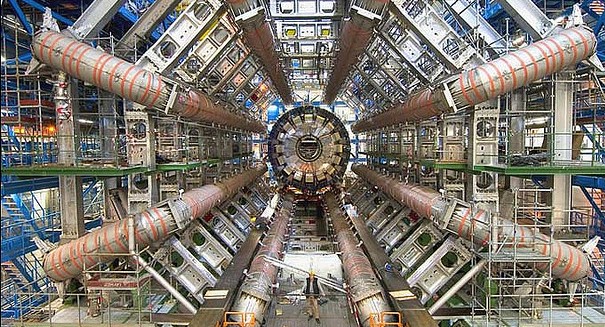
Large Hadron Collider should be up and running in days after a technical glitch prevented the scheduled start-up in March.
CERN’s Large Hadron Collider (LHC) was already being restarted in efforts to start work on discovering the ever elusive dark matter particle, but then a technical hiccup threw a wrench in these plans. On March 21, much to everyone’s dismay, CERN was forced to announce a several-week delay of the machine’s restart. Fortunately, the problem seems to have been addressed and the massive piece of equipment should be up and running soon.
The LHC has been shut down since February of 2013 for maintenance work that was meant to double its power. Now, the fragment of metal in one of the machines magnet circuits that was causing short circuits has been removed, and CERN said on Tuesday that, “The largest collider in the world should be ready for beam (operations) in a few days’ time.”
The magnificent Large Hadron Collider is responsible for some of the most profound scientific discoveries in the history of all man-kind, especially in physics specifically. In 2012, scientists at CERN announced the discovery of the Higgs boson, a particle previously only theorized to be the reason why all matter has mass. This achievement was very duly honored with the 2013 Nobel Prize in physics.
The LHC is a 27 kilometer (17 mile) ring-shaped tunnel lined with magnets where scientists send beams of protons whizzing down the tunnel at just about the speed of light. The magnets force the photon beams to bend through the ring-shape and then the two beams collide. When the protons collide is when the magic happens. The photons smash together and split, shooting even smaller particles all over the place. Four laboratories own clusters of sensors at the point of impact for data collection.
Scientists hope the new run of the LHC will shed light on theoretical concepts like dark matter and dark energy, and possible extra dimensions.